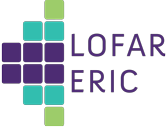Speaker
Description
In the era of state-of-the-art radio observations the necessity of multi-wavelength and multi-frequency observations has been established as the only approach to understanding the radio source populations. This is demonstrated in all its glory via the panchromatic dataset of the COSMOS field, with the latest additions of the LOFAR and JWST datasets. Approaches as such enable us to image in high resolution and sensitivity the active galactic nuclei (AGN) radio population and extract information about the radio properties and their interaction with the environment. We will present the first high-resolution wide-field map of a Dec+02 field using HBA LOFAR observations and the latest LOFAR VLBI pipelines to obtain an angular resolution of 0.8” across 1 sq. deg. We will discuss the challenges related to processing low Declination, high-sensitivity observations, and we will share with the community the steps taken to overcome these, which will benefit also the preparations for LOFAR2.0 observations. We will also present the 6” resolution 144 MHz map, and will discuss how the LOFAR observations of COSMOS, in combination to multi-frequency (from 144MHz to 3 GHz) and multi-wavelength (X-ray to radio) data from the panchromatic dataset of COSMOS, help us understand the nature of the radio source populations and their interrelation to their hosts and large-scale environment (e.g. galaxy groups, density fields, and cosmic web). I will lastly present our efforts to study the physical properties and hosts of radio AGN using LOFAR and JWST sub-arcsec observations.

